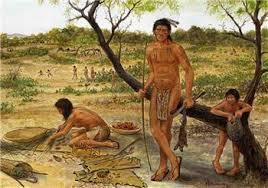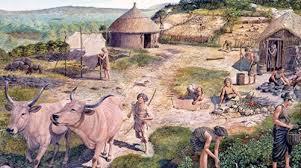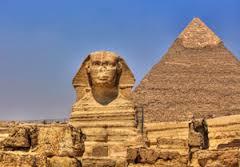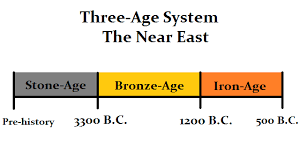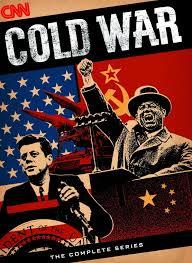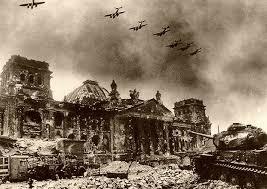World Civilization And History Quiz! Trivia
(223).jpg)
The history of humanity as determined by the study of archaeological and written records is described by the world's history. Having been many changes in civilization, as a good history student, you are expected to know some of it. Do you think you can pass this world civilization and history? Take this test and find out!
- 1.
Which era is known as the early stone age?
- A.
Paleolithic Era
- B.
Neolithic Era
- C.
Age of Enlightenment
- D.
Agricultural Revolution
Correct Answer
A. Paleolithic EraExplanation
The Paleolithic Era is known as the early stone age because it refers to the time period in human history when stone tools were predominantly used by early humans. This era began around 2.6 million years ago and lasted until around 10,000 BCE. During this time, humans were primarily hunter-gatherers, relying on hunting, fishing, and gathering wild plants for survival. The use of stone tools was a significant technological advancement during this era, marking the transition from the earlier prehistoric period.Rate this question:
-
- 2.
Which era is known as the new stone age?
- A.
Agricultural Revolution
- B.
Neolithic era
- C.
Paleolithic Era
- D.
Industrial Revolution
Correct Answer
B. Neolithic eraExplanation
The Neolithic era is known as the new stone age because it was a period in human history characterized by the development of agriculture and the use of stone tools and weapons. During this time, humans transitioned from a nomadic lifestyle to settled communities, practicing farming and domesticating animals. This shift in lifestyle and the advancements in agriculture marked a significant change in human society and marked the beginning of a new era.Rate this question:
-
- 3.
Which place is the site of the earliest developments of the Neolithic Revolution?
- A.
Egypt
- B.
Cush
- C.
Mesopotamia
- D.
Persia
Correct Answer
C. MesopotamiaExplanation
Mesopotamia is considered the site of the earliest developments of the Neolithic Revolution. This region, located between the Tigris and Euphrates rivers, is often referred to as the "cradle of civilization." It is here that the transition from a hunter-gatherer lifestyle to settled farming communities took place around 10,000 BCE. The fertile land and access to water allowed for the cultivation of crops and the domestication of animals, leading to the development of agriculture, the establishment of permanent settlements, and the emergence of complex societies.Rate this question:
-
- 4.
Which civilization followed that of Mesopotamia?
- A.
Rome
- B.
Persia
- C.
Greek
- D.
Egyptian civilization
Correct Answer
D. Egyptian civilizationExplanation
The correct answer is Egyptian civilization. After the decline of Mesopotamia, the Egyptian civilization emerged as one of the earliest and most advanced civilizations in the world. The Egyptians developed their own unique culture, language, and religious beliefs. They built impressive structures such as the pyramids and had a complex system of governance and social hierarchy. The Egyptian civilization thrived for thousands of years, leaving a lasting impact on art, architecture, and other aspects of human civilization.Rate this question:
-
- 5.
Which of these make up the three-age system?
- A.
Stone Age, Bronze Age, Iron Age
- B.
Golden Age, Stone Age, Bronze Age
- C.
Ice Age, Stone Age, Iron Age
- D.
Agricultural Age, Bronze Age, Iron Age
Correct Answer
A. Stone Age, Bronze Age, Iron AgeExplanation
The three-age system is a classification of prehistoric and early historic periods based on the development of tools and technology. It divides human history into three main periods: the Stone Age, the Bronze Age, and the Iron Age. During the Stone Age, humans used stone tools. The Bronze Age marked the use of bronze tools and weapons, while the Iron Age was characterized by the use of iron tools and weapons. Therefore, the correct answer is Stone Age, Bronze Age, Iron Age.Rate this question:
-
- 6.
How long did the Cold War last?
- A.
50 years
- B.
45 years
- C.
40 years
- D.
55 years
Correct Answer
B. 45 yearsExplanation
The Cold War lasted for 45 years. The Cold War refers to the period of political tension and military rivalry between the United States and the Soviet Union, which began after World War II and ended with the collapse of the Soviet Union in 1991. This prolonged period of hostility and competition between the two superpowers shaped international relations and had a significant impact on global politics, economics, and military strategies.Rate this question:
-
- 7.
What event led to the creation of the first communist state?
- A.
The French Revolution
- B.
First World War
- C.
The Russian Revolution
- D.
Second World War
Correct Answer
C. The Russian RevolutionExplanation
The Russian Revolution led to the creation of the first communist state. This revolution took place in 1917 and resulted in the overthrow of the Russian monarchy and the establishment of the Soviet Union. The Bolshevik Party, led by Vladimir Lenin, played a key role in this revolution, advocating for the establishment of a communist society. The Russian Revolution marked a significant turning point in history, as it laid the foundation for the spread of communism worldwide.Rate this question:
-
- 8.
In which year did the First World War begin?
- A.
1915
- B.
1913
- C.
1912
- D.
1914
Correct Answer
D. 1914Explanation
The First World War began in 1914. This is a well-known historical fact. The war started on July 28, 1914, with the assassination of Archduke Franz Ferdinand of Austria-Hungary. This event triggered a series of alliances and conflicts that eventually led to the outbreak of the war. The year 1914 is widely recognized as the beginning of the First World War and is supported by historical records and research.Rate this question:
-
- 9.
In which year did the Second World War begin?
- A.
1939
- B.
1938
- C.
1937
- D.
1940
Correct Answer
A. 1939Explanation
The correct answer is 1939 because this is the year when the Second World War began. The war started on September 1, 1939, when Germany invaded Poland. This event marked the beginning of a global conflict that lasted until 1945 and involved many countries around the world.Rate this question:
-
- 10.
What was the first spaceflight that landed humans on the Moon?
- A.
Apollo 12
- B.
Apollo 11
- C.
Apollo 17
- D.
Apollo 19
Correct Answer
B. Apollo 11Explanation
Apollo 11 was the first spaceflight that successfully landed humans on the Moon. It was a historic mission that took place in 1969 and was commanded by Neil Armstrong. The crew of Apollo 11 consisted of Neil Armstrong, Buzz Aldrin, and Michael Collins. Armstrong and Aldrin became the first and second humans to walk on the Moon's surface, while Collins orbited the Moon in the command module. The success of Apollo 11 marked a significant milestone in space exploration and the achievement of President John F. Kennedy's goal of landing humans on the Moon before the end of the 1960s.Rate this question:
-
Quiz Review Timeline +
Our quizzes are rigorously reviewed, monitored and continuously updated by our expert board to maintain accuracy, relevance, and timeliness.
-
Current Version
-
Mar 20, 2023Quiz Edited by
ProProfs Editorial Team -
Dec 16, 2016Quiz Created by
Marjorie Dayahon



